AMMPT preserving our broadcasting heritage
The Wireless Hill Museum is now undergoing refurbishment in time for the centenary on September 30th this year. The telecommunications collection has been deaccessioned with the two largest items now in the process of being moved, which will leave the main room clear of exhibits. The first large item is one of the two RCA TRT-1B videotape machines acquired by TVW Channel 7 in Perth, for the 1962 Commonwealth and Empire Games. This machine and its mate were responsible for recording such local classics as “Invitation to the Dance”, “The Good Oil”, “Nutcracker Suite”, “Baptism of Fire”, “Bradman”, inserts for the live variety show “In Perth Tonight” and the teenage program “Club 7 Teen”, and all the popular TVW Channel 7 shows up until the introduction of colour in 1975. They also were used to replay everything presented on videotape from quiz shows such as “Pick a Box” and “Coles Quiz” to “Bandstand”, “Sing Sing Sing” with Johnny O’Keefe, “Sound of Music” with Bobby Limb and “In Melbourne Tonight” with Graham Kennedy. This machine has now been dismantled in preparation for removal to a temporary storage site. The dismantling was largely the efforts of Ross McDonald and Daryl Binning.
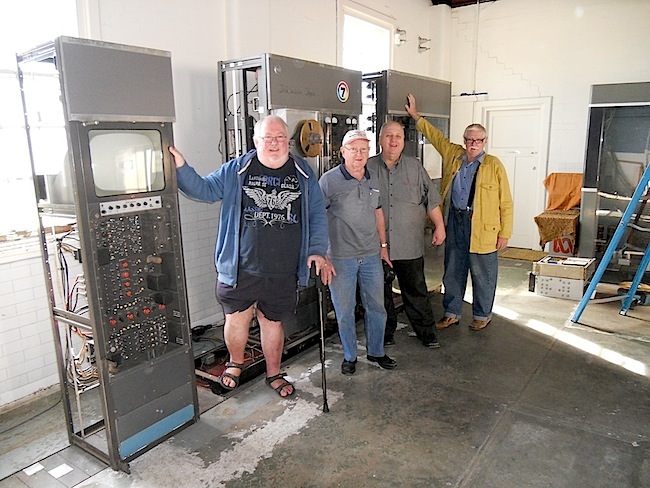
TVW veterans present at the dismantling were Peter Croft, Ross McDonald, Ken McKay and Gordon McColl, whilst AMMPT’s Daryl Binning took the photo.
TVW’s First Videotape Machine – RCA TRT-IB
WA TV History
TVW Channel 7 in Perth acquired two RCA manufactured TRT-IB two inch quadruplex videotape machines for the 1962 Perth Commonwealth and Empire Games. A third machine was borrowed from RCA for the duration of the games.
The original TVW videotape department staff included Tim Ball, Ernie Taylor, Colin Gorey, Geoff Mortlock and Ken McKay. Shortly after, Peter Hobson, Kevin Reeves, Peter Croft, John Cleary and Eileen Bacon joined the team. A number of other woman also worked in the area during that pioneering era. Eventually, most of TVW’s technical staff became proficient in operating these machines, and particularly the newer transistorised machines when the videotape and telecine areas were combined in one operations area with Kevin Campbell appointed Operations Supervisor, before rising in the ranks to become the Managing Director of TVW. Geoff Mortlock went on to be a Chief Engineer at TVW. John Quicke was the Chief Engineer responsible for the acquisition of the early videotape facilities at Seven.
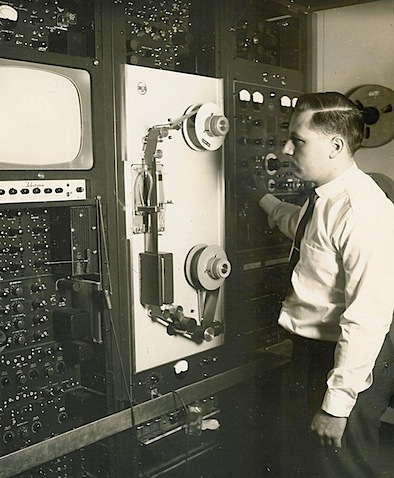
The other large item still remaining at Wireless Hill Museum is the 10 kilowatt AM (amplitude modulated) radio transmitter, used to broadcast ABC programs from the 1950s till 1972. The facility was provided by the Post Master General’s (PMG) Department, which has since evolved into Telstra and Australia Post. The broadcasting site was located in bushland, then referred to as Wanneroo, but now known as Hamersley. It acted first as a transmitter for 6WN, with programs emanating from the ABC studios in Perth. It was then relocated to 6DL Dalwallinu, to provide a rural service till 1972, when it was replaced by solid state equipment. One well known ABC veteran announcer to broadcast through this transmitter is Earl Reeve.
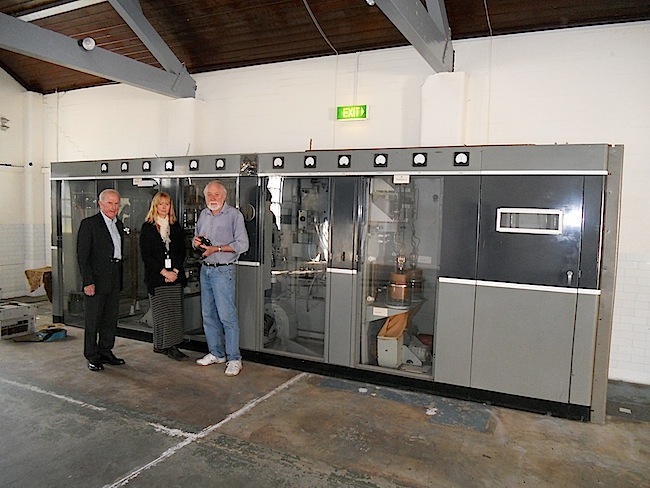
In 1932, the Australian Broadcasting Commission Act was passed, leading to the Australian Broadcasting Commission taking over the service from the Australian Broadcasting Company (who earlier took over from Wesfarmers), following which the 6WF transmitter was relocated to Wanneroo.
The ABC’s technical services were then provided by the PMG Department, who procured the Wanneroo property for the purpose of establishing a new radio broadcasting station. At the end of the year, the eight year old medium-wave station 6WF, located on the top of the Wesfarmers building in downtown Perth, was retired and a new 5 kW transmitter for this ABC service was installed at Wanneroo.
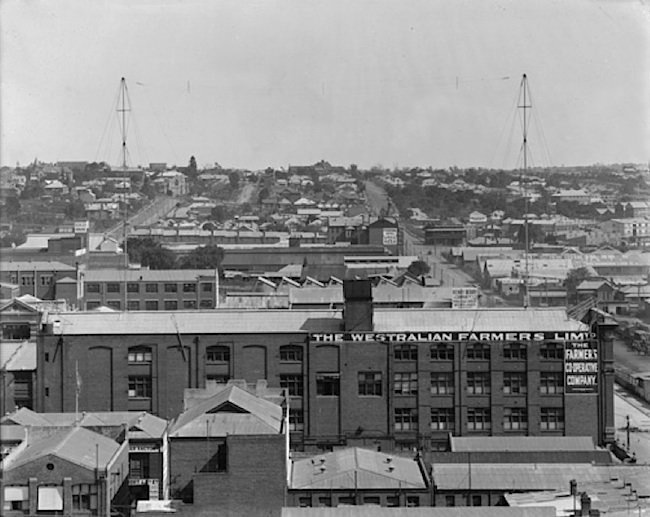
1924 – Original 6WF mast on Wesfarmers building, Wellington Street, Perth
In 1938, work commenced at Wanneroo for the installation of two additional broadcast transmitters, one medium-wave and one shortwave. The one year old medium-wave 6WN was transferred from the city General Post Office (GPO) building to Wanneroo, and a new shortwave transmitter VLX was installed for coverage of outback areas in Western Australia.
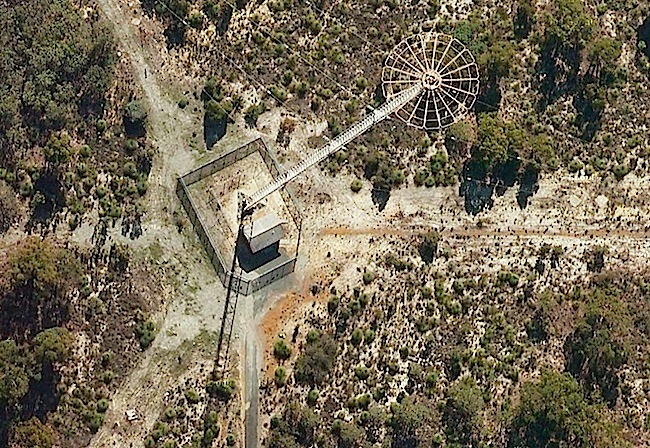
In 1959, the station was rebuilt and three shortwave transmitters installed, two at 10 kW and one at 50 kW. These three units were on the air under the two call-signs, VLW & VLX, and at times, the programming from Radio Australia in Melbourne was relayed by all three of these transmitters for coverage into Africa and Asia. Ten years later, the VLX call-sign was amalgamated into VLW, due to the fact that all three shortwave transmitters were carrying the same ABC programming. VLW9 was on air continuously during broadcast hours, whilst VLW6 covered the mornings and nights. VLW15 covered the daylight hours. Each broadcast on frequencies which took best advantage of the signal propagation for the atmospheric conditions, according to the time of day. Much of the programming emanated from Perth, until the construction of regional studios in Kalgoorlie, Geraldton, Bunbury and Albany. Even then, only a small percentage of local regional programming came from the country located studios.
The VLW6, VLW9 and VLW15 shortwave transmitters at Wanneroo are now silent, being withdrawn from service and closed down in 1994.
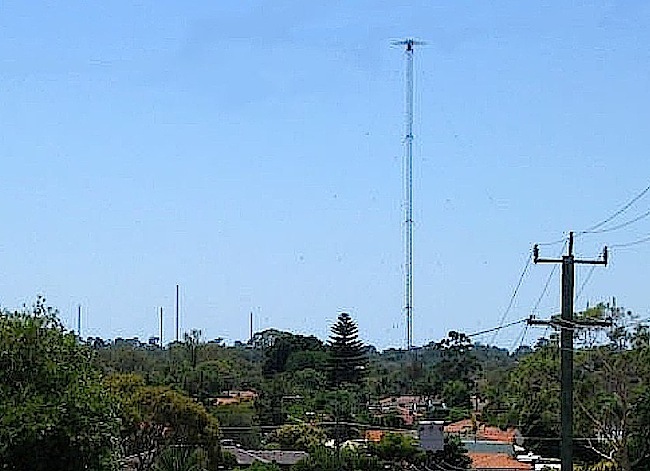
Suburbia is fast encroaching on the Hamersley (former Wanneroo) transmitting site, with many complaints of radio interference coming from residents who chose to live nearby.
The VLW service was important during times when cyclones cause havoc in the North West of WA. The medium-wave local regional stations were often off the air as a result of storm damage and a loss of power. Program circuits were also interrupted by flooding. As the VLW service emanated from the Perth region, listeners in the north could depend on a consistent signal carrying cyclone warnings and damage updates. As a result of cost cutting and a desire to save on maintenance and equipment updating, it was decided to make Hamersley an unmanned transmitting site with the installation of modern solid state equipment for the medium-wave services 6WF and 6WN, which now included 6PB, the parliamentary service. It was considered that alternate means were available for remote homesteads to receive cyclone updates. They chose to overlook the fact that satellite reception was subject to rain fades, a feature of cyclones, when this decision was made. Once again this reinforced the notion that managers and accountants tend to override engineering wisdom when it comes to saving a dollar.
Different people and different generations have different notions of what’s important. Risk management has become a popular doctrine for those wishing to tighten the purse strings, which is a bit like accepting collateral damage when it comes to killing innocent civilians in a war zone. There will be consequences, but CEO’s and share holders will gain from the sacrifices of others. This doctrine also entered the public service as managers were recruited from private enterprise to replace the public service mentality. In many cases the baby got tossed out with the bath water.
There also seems to be a change in mainstream museum philosophy. In many cases the job of collecting our heritage, in the form of the tools, equipment and structures which formed a part of our development, now falls on the shoulders of concerned groups of enthusiasts doing it freely out of passion.
The conservation of our remaining content, the programs of the era, the biographies of those involved, and significant relics to illustrate how things were, are very important to telling the story of broadcasting… and the evolving history of WA. The loss of archival material, the disposal of cherished collections and the different values of younger curators, will change how future generations see our past. Meanwhile AMMPT is the only entity driven by veterans, enthusiasts, collectors and historians who value these things on the scale necessary for worthwhile preservation of our broadcasting and moving picture industries. They are the folk who lived the era, know what it was like, and understand what really took place.
I was recently listening to one young person’s rationale for pulling down Perth’s old buildings and digging up the Esplanade… to be told that all the old folk who protest will be dead soon so their opinions are irrelevant.
When one of our colleagues was writing his dissertation a few years ago, the professor was not content with it being told as it was, but insisted that it include an investigation into sexual discrimination in the commercial television industry. Interestingly, the ladies of the era did not perceive any, as many filled important roles, such as Coralie Condon, Marion Leyer, Jean Hunsley, Beverly Gledhill and others. True it was the custom that women did not get equal pay for equal work, but that was an industrial matter and more in the political sphere, rather than them being discriminated upon by management. Meanwhile, there was a revolution taking place within the ABC, with the Women’s Broadcasting Cooperative, and the Whitlam Labor government’s commitment to women’s rights, but the ABC was a different culture from the commercial arena. History needs to take into consideration the prevailing mood at the time, and care needs to be taken not to misrepresent it. Unfortunately, political correctness tends to cast harsh value judgements on some happenings, when there was no sinister intent. One needs to take care that the truth is not filtered by zealous upholders of an alternate reality… who weren’t part of the history.
How often do we see news reports that misconstrue a situation… one only has to watch the ABC’s “Media Watch” to realise how many errors are made in the reporting of current events. Today’s news becomes tomorrows history, so the likelihood of inaccuracies creeping into the story telling multiplies as time passes. The people who lived it need to document it before memories fade, giving credit where its due, as we celebrate our industry’s achievements. The equipment of yesteryear was massive compared to that of today. Most homes now have a digital video recorder that captures television programs in high definition. These devices are many times more sophisticated and smaller than the massive RCA video recorder AMMPT is preserving. Yet in 1962 it was the latest technology, which needed a team to operate and maintain. How else can one demonstrate how this was done, unless examples are kept so future generations can have an understanding of where things came from and how we arrived where we are today?
AMMPT is constantly expanding its horizons as the collection grows. There now exists an impressive accumulation of cinema artefacts with the broadcasting collection gathering increasing momentum. Its important therefore that the people who are most familiar with this equipment play a role in its preservation. For this reason we urge all veterans of the related industries to participate in the social and other activities aimed at this purpose. The past and present engineers, technicians, operators, personalities, performers, reporters, support staff and management are all encouraged to become involved.
Further reading:
Urgent need for space to store broadcasting relics
- AMMPT Appeal for Storage Space
- Finding a new home for TV stations and memorabilia
- New Age Museums can dramatically boost tourism
Wireless Hill Future – in six parts
The following series of articles explains why the Telecommunications Museum space will now be devoted to other things.
- Wireless Hill Future – Part 1 of 6
- Wireless Hill Future – Part 2 of 6
- Wireless Hill Future – Part 3 of 6
- Wireless Hill Future – Part 4 of 6
- Wireless Hill Future – Part 5 of 6
- Wireless Hill Future – Part 6 of 6
With STW Channel 9 approaching its 50th anniversary in 2015, and a spate of recent reunions in both television and radio, the suggestion has been put forward to establish a group to celebrate our past and the many friendships formed. The notion that a 7-2-9-10 Club, which also embraces radio, entertainers and allied fields, could be a goer if we find a suitable venue. AMMPT has offered their meeting place as a regular venue for just that.
- Notion of a 7-2-9-10 Club
- ABW Channel 2 – 50th Reunion
- TVW Reunion Photos
- TVW Engineering Reunion 2012
- Reunion Dinner at the historic Romany Restaurant
- Radio 6PM Reunion
- Radio 6PM Reunion – Video and Photos
- 96FM 30th Anniversary Reunion
- Kings Park Mini-Reunion
- Coralie Condon’s Post TVW Reunion Get Together
- Coralie Condon welcomes old colleagues








Thanks Ken for another terrific story, you are doing such a fantastic job keeping track of all of these historical happenings, I think you should get nominated for an Oscar.
It’s such a shame the Wireless Hill Museum has to go though after being such an important part of WA history for so long.
It is great however that the folks from AMMPT have managed to find somewhere to store it all, goodness knows where – unless it’s in somebody’s back shed.
It was also good to see Ross McDonald getting involved in the dismantling, I am sure he would have got a great kick out of doing it and brought back many memories for him, having known and worked with Ross for over 33 years I am sure he would have relished the experience.
What a pity you couldn’t have got John Quicke involved too, I am sure he would have got a kick from it too.
Your follow on story was very well put together too and in my opinion very well worded politically.
What a pity the State Government can’t be enticed into helping preserve this hugely important heritage equipment and associated material for future generations to enjoy.
Hopefully we can catch up on my next visit back to Perth.
Best Wishes from New Zealand and keep up the great work.
Harry Smith,
Past Vice President AMMPT.
Fantastic to now know this history, my dad was Ernie Taylor and he spoke fondly of these days. This will serve well to tell all the grand kids about – thank you x
x